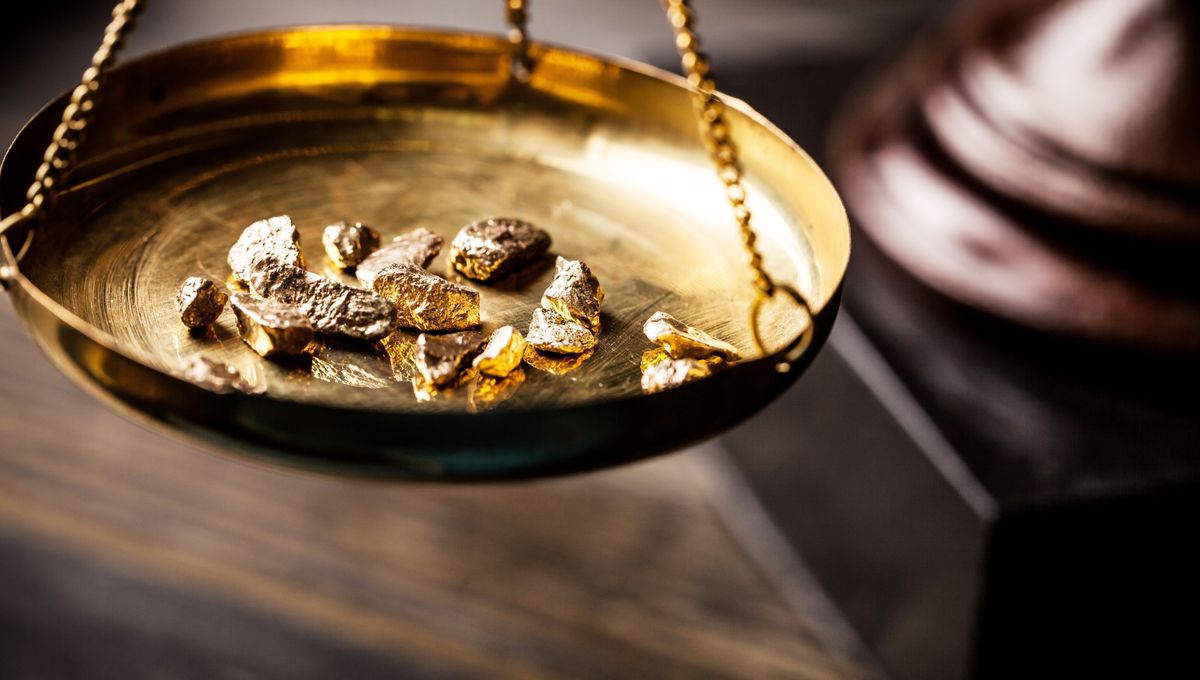
As one of the most useful minerals on Earth, gold is favored for its conductivity, inability to tarnish, workability, and of course its good looks. But despite its seeming abundance, might our gold supplies one day run out?
History has seen a number of “gold rush” periods around the world, with major deposits being found across Australasia, both North and South America, and South Africa throughout the 19th century.
It’s estimated that of all the gold mined throughout history, two-thirds of it was produced since the 1950s. The world has continued to increase its gold reserves by around 1.8 percent each year for the last 100 years, until now.
Peak gold
The concept of “peak gold” refers to the period in which gold production stops growing. With production falling by 1 percent in 2018, the first time since 2008, gold supplies are no longer reaching the high demand for the product. This resulted in a 2021 global deficit of 460.3 tonnes, leading experts to believe we could be reaching peak gold.
While the timing of this suspected peak gold could be due to the COVID-19 pandemic temporarily halting and slowing mining operations, the industry’s inability to reach demand since could also be a result of the lack of large gold deposit discoveries in recent years.
The 2021 deficit figure, however, doesn’t take into consideration recycled gold reserves, which were able to make up an impressive 1,150 tonnes during the year, making up for the mining deficit and then some.
Our ability to recycle gold is just one of the mineral’s many redeeming qualities, and as long as we’re able to continue the recycling process, this should be able to offset the reduced mining yields and make up for the increase in demand.
What we have found so far
The estimated amount of gold mined throughout history is said to be around 169,643 tonnes, with the total discovered amount being about 221,353 tonnes. And thanks to gold’s virtually indestructible nature and its ability to be recycled, pretty much all of this is still around.
While this may seem like a large figure – and weighing around eight times more than the Statue of Liberty, it really is – all the gold ever discovered could in fact fit in a 23-meter (75.5-foot) cube (that’s about the length of a cricket pitch).
Around 2,500 to 3,000 tonnes of gold are mined each year, with more than 30 percent of all gold coming from the Witwatersrand Basin mine in South Africa. Currently, China is the biggest miner of gold, while the single largest gold-mining complex is Barrick Gold’s Nevada Gold Mines, who produce a whopping 99,223 kilograms (218,749 pounds) a year.
What’s left over?
Gold is found in an abundance of 0.0013 parts per million in the Earth’s crust. While that might seem pretty rare, for reference, the rarest precious metal is found at just 0.000037 parts per million.
The gold left in the ground is measured either as “reserves”, which are economical to mine at current gold prices, or “resources”, which need more investigation to establish if they’re economical, or need to be sold at a higher price.
The US Geological Survey estimates below-ground reserves to be around 51,700 tonnes – that’s about 20 percent of discovered gold that is yet to be mined. This would mean we could potentially mine all currently known gold reserves in just over 17 years.
But advances in mining technology are making it both easier to discover new reserves and more economical to mine resources, so it’s not likely we’ll pillage all of Earth’s gold any time soon.
Mining companies are now flocking to Victoria, Australia, in what they’re calling a “second gold rush”. Here, they’re utilizing updated understandings of rock formation to better predict the location of gold reserves, and today’s modern drilling equipment is allowing for a higher yield.
The discovery of a 2.6-kilogram (5.7-pound) gold nugget by an amateur gold hunter in the Australian state goes to show there are still some hefty nuggets left to be found.
Other sources of gold
There are also a number of gold reserves we’re aware of on Earth that are not economical to mine, and likely will never be.
Known deposits in Antarctica would require extensive equipment and risk to retrieve in the continent’s harsh climate. Similarly, there’s thought to be gold throughout the ocean floor, but with no viable way of getting to it, the value of the yield would never justify the advances.
Looking further afield, there are also gold reserves on the Moon. While we might one day have a lunar base, currently, mining Moon-gold is not worth the market value. But maybe the Artemis II crew should pack their gold pans just in case.
Source Link: When Will All The Gold Run Out?